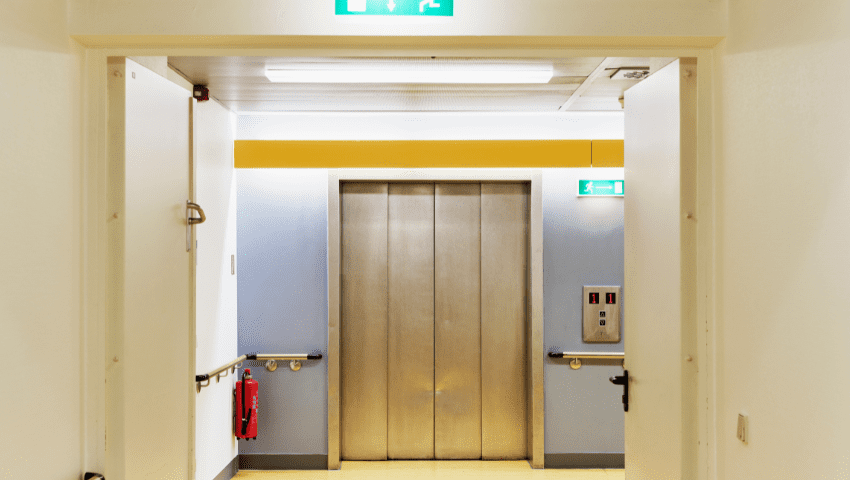Hospital elevators .. Your full guide 2023
Have you ever been stuck in a hospital elevators? It’s not the most pleasant experience! But with the right elevator, you can make sure the ride is smooth, safe, and comfortable.
In this blog post, we’ll look at five of the best hospital elevators on the market today. Read on to find out which one is right for your healthcare facility!

Introduction: What Are Hospital Elevators and Why Are They Needed?
Hospital elevators are essential components of any healthcare facility, providing a safe and efficient means of moving patients, medical staff and equipment between floors. They are designed to carry a heavier load than standard elevators, ranging from 600 to 2,500 kilos.
Hydraulic elevators are the most common type of hospital elevator, as they offer increased mobility and are able to accommodate larger loads. However, for those who need to transport patients or equipment over multiple floors, Schindler 2500 Bed Lift is the ideal choice.
It offers features such as custom-built cabins, adjustable speed and weight capacity, as well as a variety of finishes and franchise options. To ensure that your hospital elevator works smoothly and safely at all times, it is important to have periodical and general elevator maintenance by authorized elevator maintenance firms.
The Benefits of Quality Hospital Elevators
The installation of quality hospital elevators is key for providing excellent care and experience to patients, their families, and the staff. With a hospital elevator, patients can easily move from one level to another without the need for manual lifting or help from an attendant.
1. Quality hospital elevators provide increased mobility to elderly and disabled patients, allowing them to access different floors with ease.
2. They also reduce the amount of noise in the hospital, creating a tranquil environment that helps improve patient health.
3. KONE elevators for hospital use are designed for reliable operation, as travel accuracy is vital for the safety of both patients and staff.
4. Patient lifts help to save time for caregivers, allowing them to focus on helping other patients or completing other tasks.
5. With an elevator start/hour rate of 15 floors in a hospital, these lifts can do the job of two people, making them an ideal solution for busy hospitals.
6. The beds and stretchers used in quality hospital elevators are designed with both patient and hospital requirements in mind, providing a comfortable and secure journey for all passengers.

Types of Hospital Elevators
1. Hydraulic Elevator: Hydraulic elevators are the most commonly used for hospitals as they provide a smooth and reliable ride. These elevators use a hydraulic fluid to raise and lower the car, and are typically very quiet in operation.
2. Traction Elevator: This type of elevator is powered by an electric motor and uses a sheave and steel rope to lift the car up and down the shaft. Traction elevators can move at a faster speed than hydraulic elevators, making them ideal for hospitals where time is of the essence.
3. Machine-Room-Less Elevator: This type of elevator is similar to traction elevators, but it doesn’t require a separate machine room to be installed. This makes them ideal for hospitals with limited space or those that need to move large amounts of people quickly.
4. Vacuum Elevator: Vacuum elevators use air pressure to move the car up and down the shaft, making them extremely energy efficient. They also require less space than other types of elevators, making them perfect for hospitals that don’t have much room for an elevator shaft.
5. Hospital Stretcher Lifts: Hospital stretcher lifts are specially designed for transporting critically ill patients without disturbing their treatment or recovery process. These lifts come in different sizes and can be used in any type of hospital setting, from general wards to Intensive Care Units (ICUs).
6. Bed Lifts: Bed lifts are designed specifically for moving a patient’s bed between floors in a hospital setting. These lifts usually have features such as anti-collision systems, automatic door closing, adjustable speed settings, and adjustable height settings, making them ideal for medical facilities with limited space or those that need to move patients quickly between floors.
What to Consider When Choosing a Hospital Elevator
When choosing a hospital elevator, there are several factors to consider. Safety is of utmost importance, so it’s essential to look for systems that have been tested and certified to comply with UL and ASME standards.
Fire protection systems, alarm buttons, and phones should also be considered for added safety and convenience. Additionally, elevators should be versatile enough to accommodate a variety of loads, from patients and medical equipment to visitors and staff.
It’s also important to look at the warranty offered by the elevator company, as well as any maintenance requirements that may need to be met. Finally, consider the finishes and franchise options available for the elevator in order to ensure it meets the needs of both patients and staff.
Medical Lifts for Different Healthcare Facilities
Medical lifts, such as the Schindler 2500 Bed Lift, are essential for healthcare facilities. They are designed to help move patients and staff with ease while ensuring a safe and comfortable ride. With reliable and durable products, you can be sure that your hospital’s elevators will provide a smooth and efficient experience.
The Schindler 2500 Bed Lift is specifically designed for hospitals, retirement homes, and spas, making it perfect for all types of healthcare facilities. It offers a wide range of features such as quiet operation, advanced safety features, and smooth acceleration and deceleration.
It also has an energy-saving mode that helps reduce energy consumption during periods of low demand. With medical lifts like the Schindler 2500 Bed Lift, you can be sure that your hospital elevator will provide a safe and comfortable ride for both patients and staff.
Maintenance Guidelines for Hospital Elevators
When it comes to maintaining your hospital elevator, it’s important to follow the guidelines set out by the manufacturer. This may include regular maintenance checks, lubrication, and cleaning of the elevator system. Periodic inspections should be carried out to ensure compliance with safety standards and to detect any potential problems.
It’s essential that you follow the manufacturer’s instructions for any maintenance and repairs that need to be made. Doing so will help keep your hospital elevator running smoothly and safely for many years to come. Furthermore, it’s important that you choose an authorized elevator maintenance firm for your hospital elevator servicing in order to ensure the highest quality of service.
Customer Segmentation for Hospital Elevators
Customer segmentation is an important consideration when choosing a hospital elevator. By segmenting customers into different categories, such as medical staff, patients, and visitors, you can ensure that the elevator meets the needs and preferences of each group. For example, medical staff may require a larger-capacity elevator with a higher load capacity, while patients and visitors may need a more comfortable experience with larger buttons and smoother acceleration.
Segmenting customers also allows you to tailor the design and features of the elevator to better meet their specific needs. Ultimately, segmenting customers will help you choose an elevator that meets the needs of everyone who uses it.
FAQs about Hospital Elevators
Q: What are hospital elevators?
A: Hospital elevators are elevators specifically designed to meet the needs of hospitals and healthcare facilities. They are reliable and accurate in their travel, able to hold beds, staff, and medical equipment.
Q: How are hospital elevators different from regular elevators?
A: Hospital elevators are designed to be more reliable, accurate, and able to hold heavier loads than regular elevators. They also often feature safety features such as emergency phone systems and automatic doors.
Q: Are hospital elevators safe?
A: Yes, hospital elevators are designed with safety features such as emergency phone systems and automatic doors for added security. Additionally, they are regularly inspected and maintained for optimal performance.
Q: What types of hospital elevators are available?
A: There are a variety of elevator designs that can be used in hospitals, including medical lifts, platform lifts, and escalators. Different types of elevators will suit different types of healthcare facilities.
Q: Where can I find hospital elevator products?
A: You can find a wide selection of dependable and reliable hospital elevator products from leading brands such as Schindler.
This post is also available in: العربية (Arabic) Dansk (Danish) Nederlands (Dutch) Français (French) Deutsch (German) עברית (Hebrew) Italiano (Italian) Polski (Polish) Română (Romanian) Русский (Russian) Türkçe (Turkish) Español (Spanish) Български (Bulgarian) Ελληνικά (Greek) Magyar (Hungarian) Português (Portuguese (Portugal))






